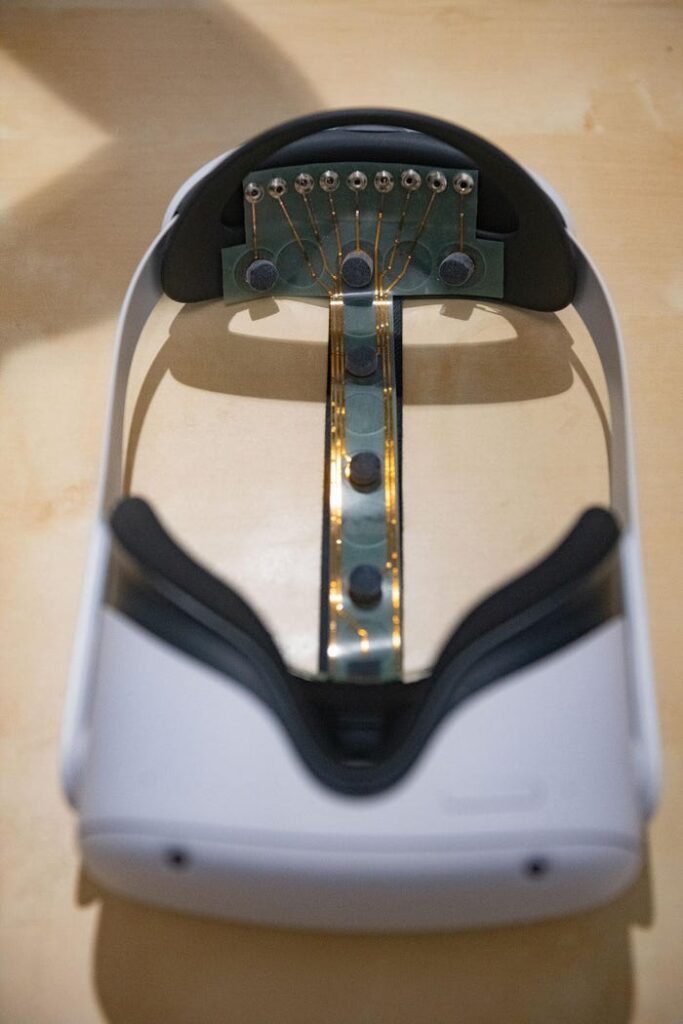Scientists have developed a new virtual reality headset that can monitor brain activity while using it.
University of Texas at Austin researchers have customized a Meta VR headset with an electroencephalogram (EEG) sensor to study brain activity in response to virtual reality stimuli.
The team believes the new design might be used in a variety of contexts, such as assisting patients with anxiety, training pilots in flight simulators, and getting a robot’s opinion on a project.
To quote the study’s primary author, “Virtual reality is so much more immersive than just doing something on a big screen,” Nanshu Lu. As a result, “it gives the user a more realistic experience,” and “our technology enables us to get better measurements of how the brain is reacting to that environment.”
While EEG-equipped headgear is already on the market, the Austin group claims their version is more comfortable. The university’s version, which features soft electrodes, is more comfortable to wear for extended periods of time.

Hongbian Li, a research associate at Lu’s lab, said,
“All of the mainstream options have significant flaws that we tried to overcome with our system.”
The EEG was used to gauge the degree to which test subjects were paying attention during a driving simulation in which they were instructed to click a button in response to various prompts.
The next step for the headset is to be integrated into robot-human interaction research at the university, giving the team a chance to see the project from the robot’s vantage point while also collecting data on the mental toll of doing so.
According to Luis Sentis, co-author of the VR EEG paper, “if you can see through the eyes of the robot, it paints a clearer picture of how people are reacting to it and lets operators monitor their safety in case of potential accidents.”
The inventors have completed the necessary preliminary patent paperwork, and they hope to partner with virtual reality (VR) firms to incorporate the technology into future product designs.